AMD Radeon RX 480 8GB Review
Ashes of the Singularity, Battlefield & GTA V Results
Ashes of the Singularity
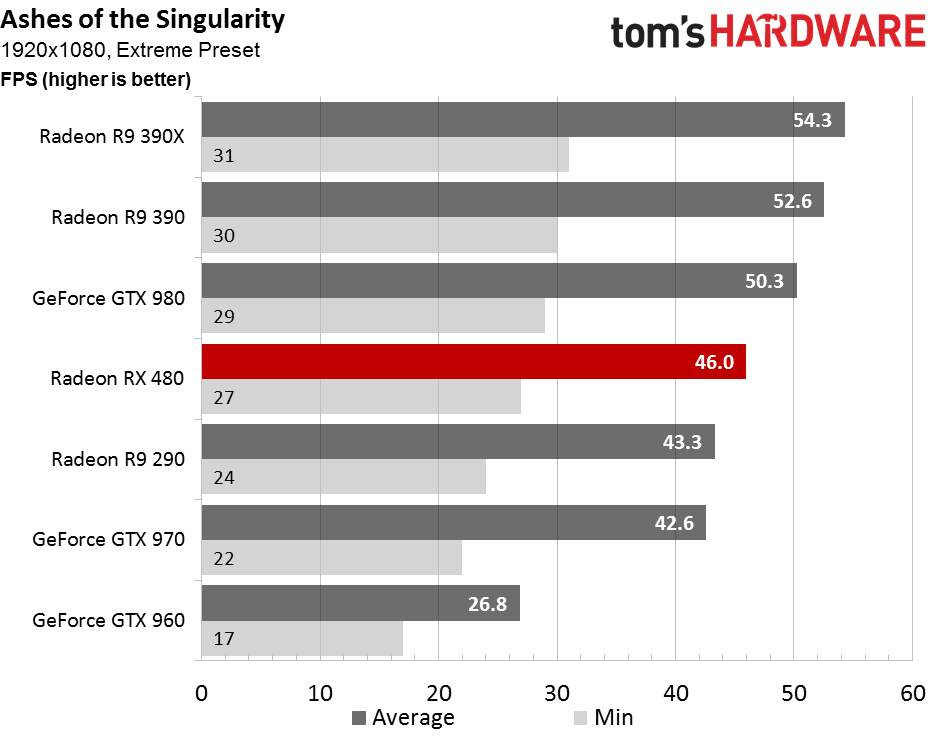
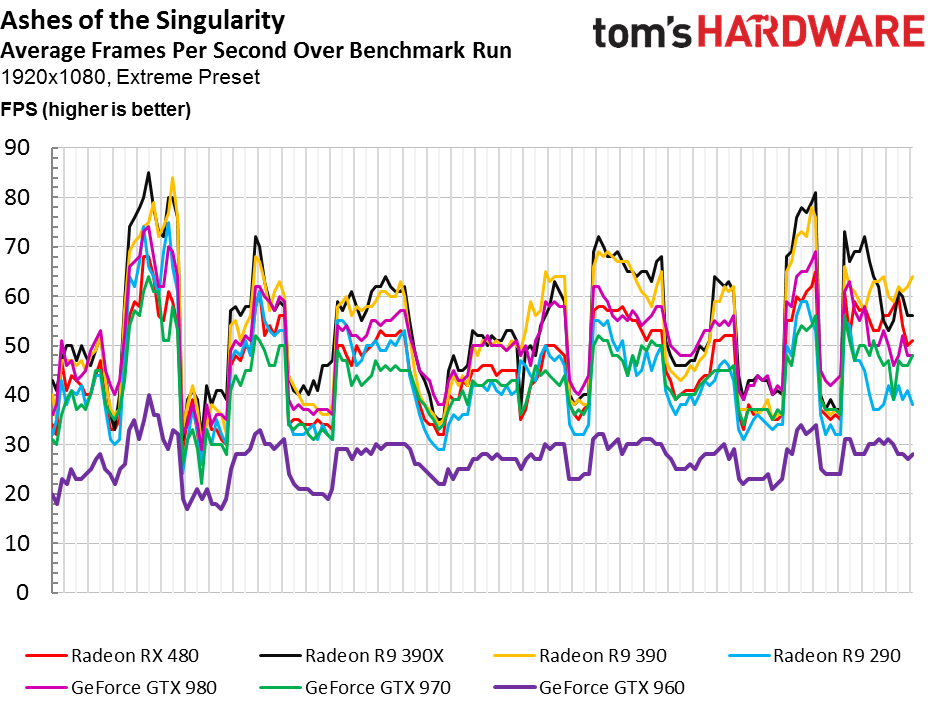
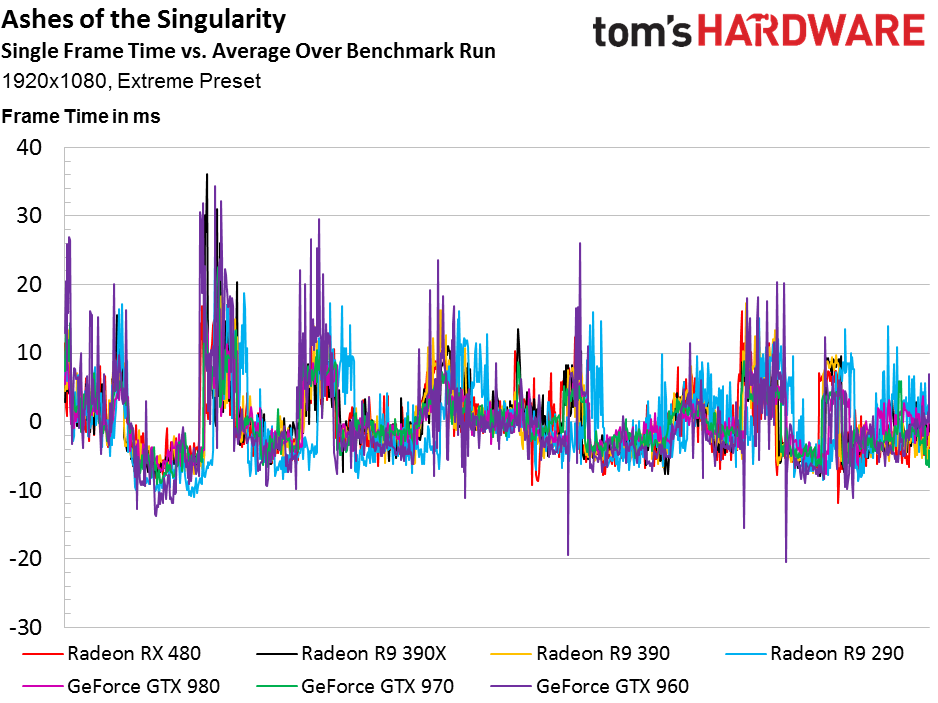
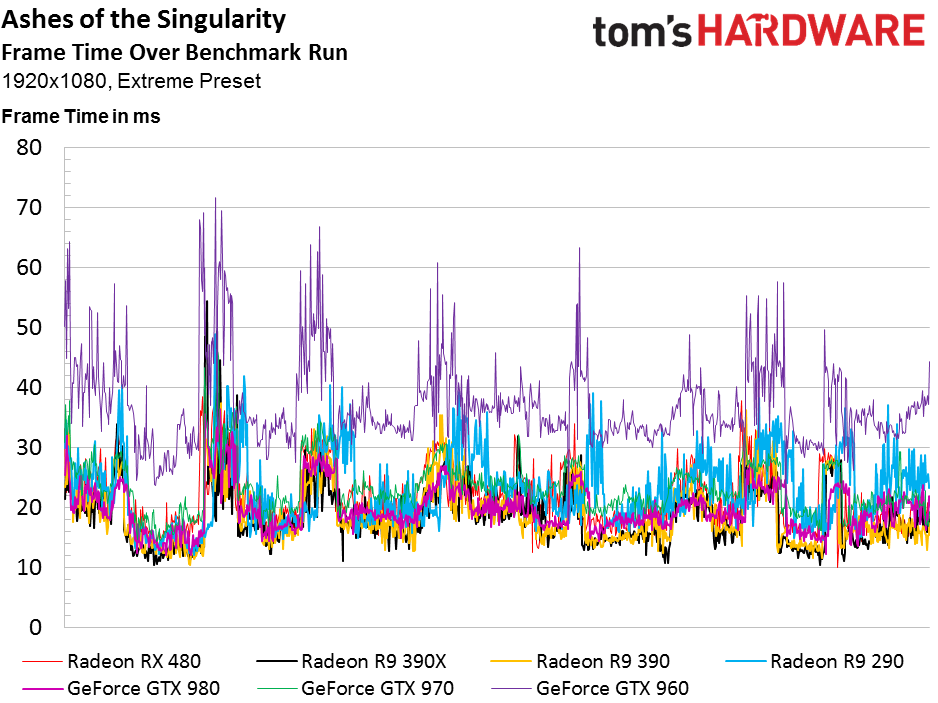

We’ve established that AMD’s architecture fares well in Ashes of the Singularity. At 1920x1080, the Radeon R9 390X and 390 both beat Nvidia’s GeForce GTX 980. The new Radeon RX 480 follows that card, and is trailed by the Radeon R9 290 and GeForce GTX 970.
Our frame time variance numbers feature the GeForce GTX 960 prominently; it covers most results, aside from the Radeon R9 290, due to its lower absolute performance.
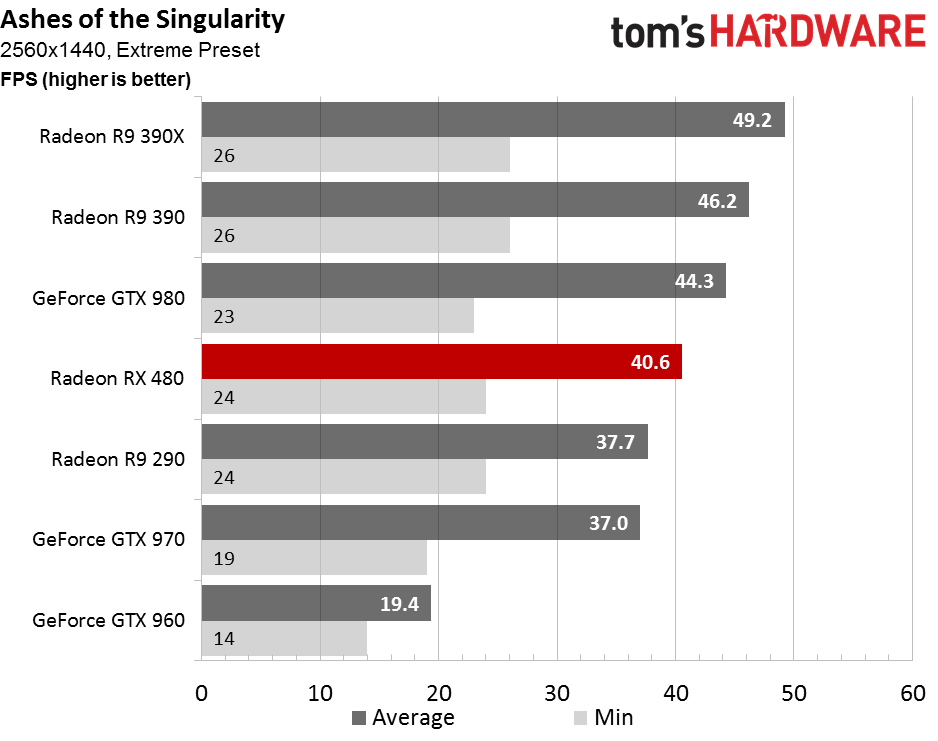
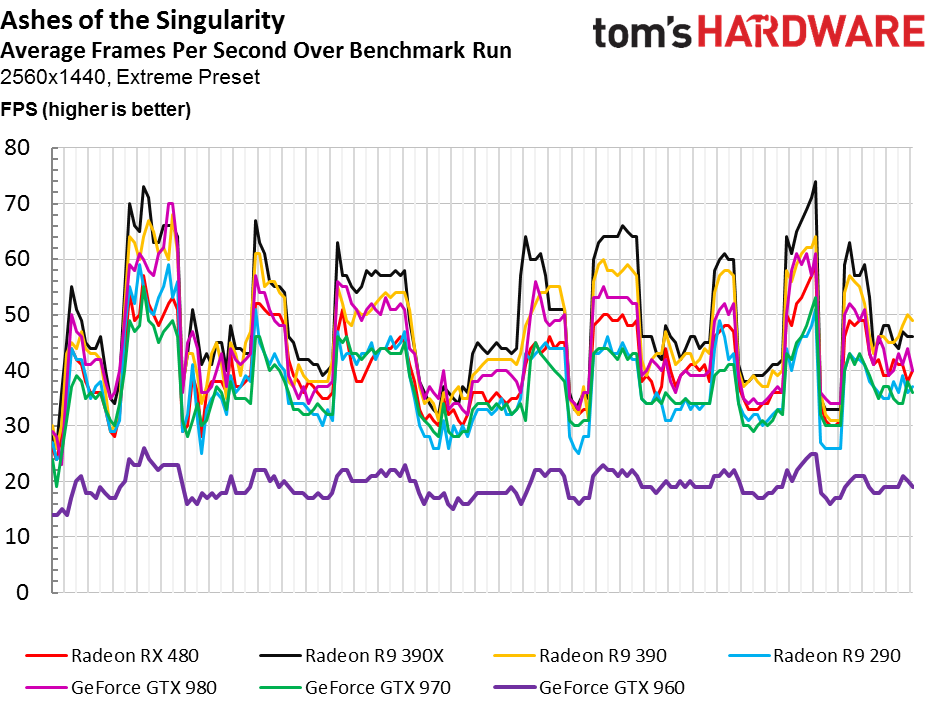
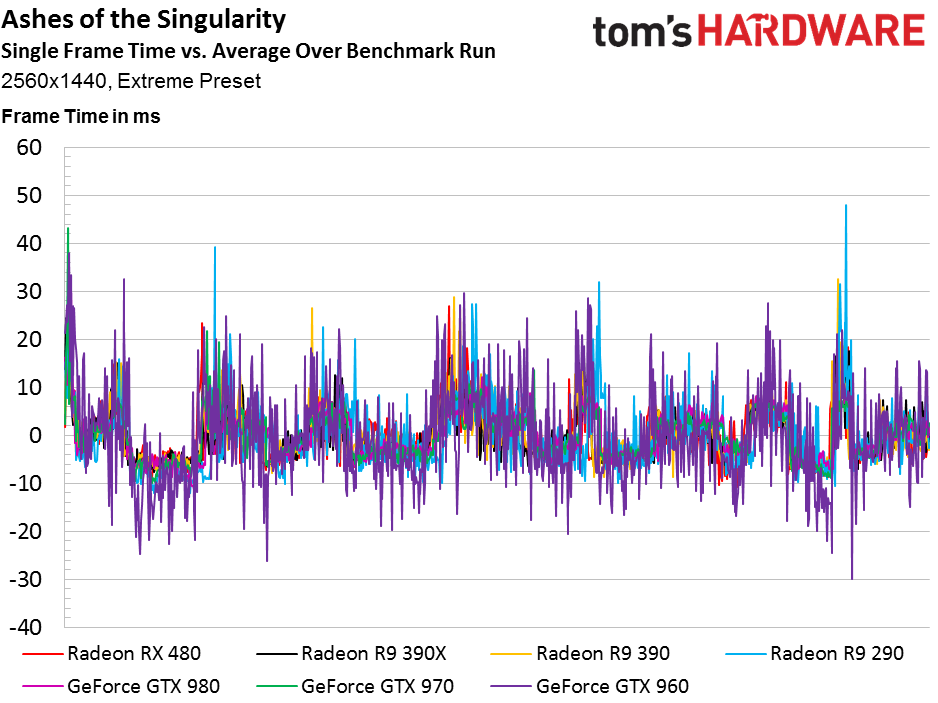

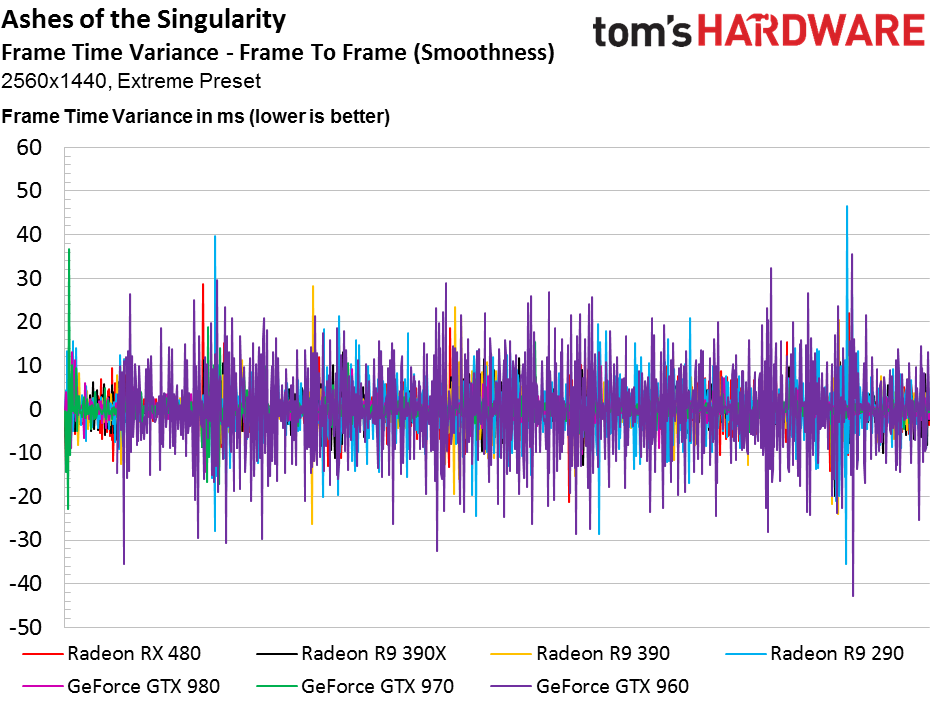
Jumping up to 2560x1440 doesn’t have as big of an effect on performance as you might expect, and the finishing order remains exactly the same. If AMD’s goal here is to show the Radeon RX 480 ahead of Radeon R9 290 and GeForce GTX 970 for acceptable VR, it’s off to the right start.
Battlefield 4
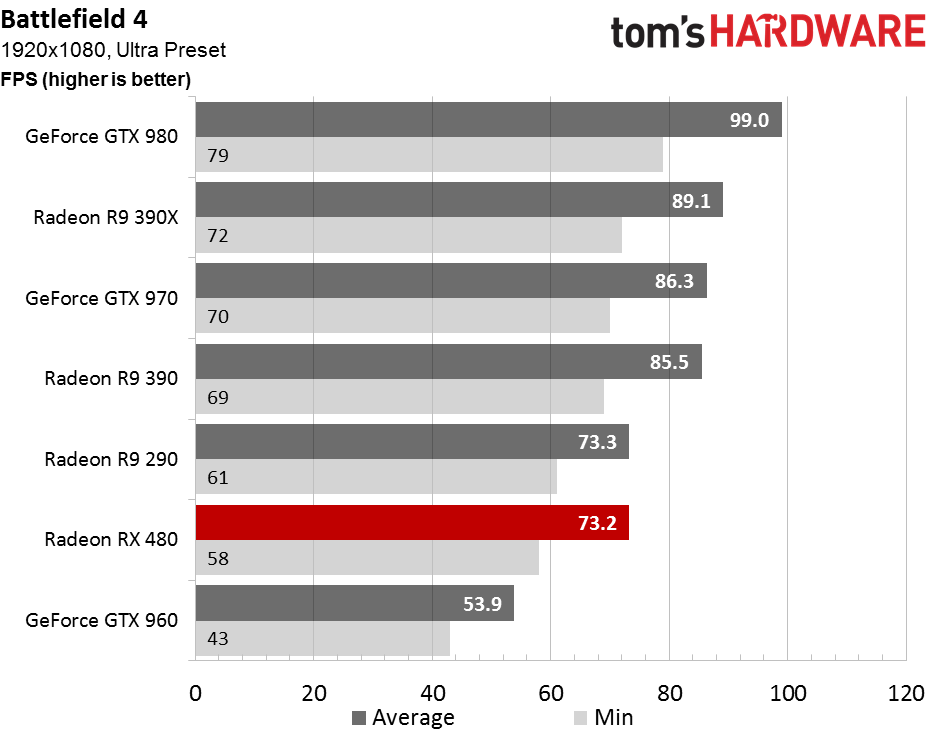
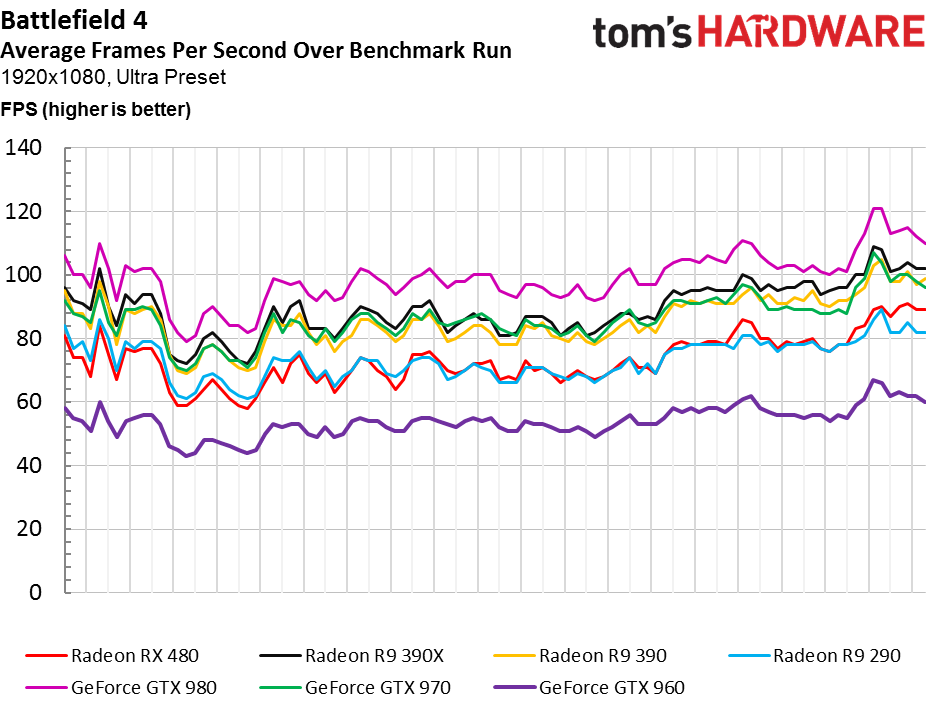
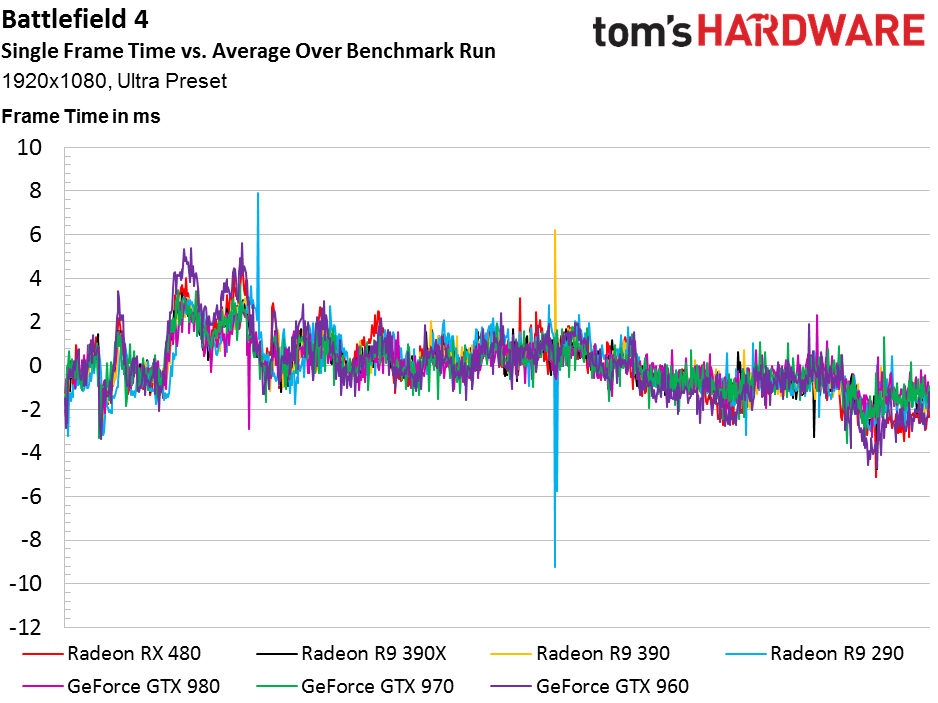
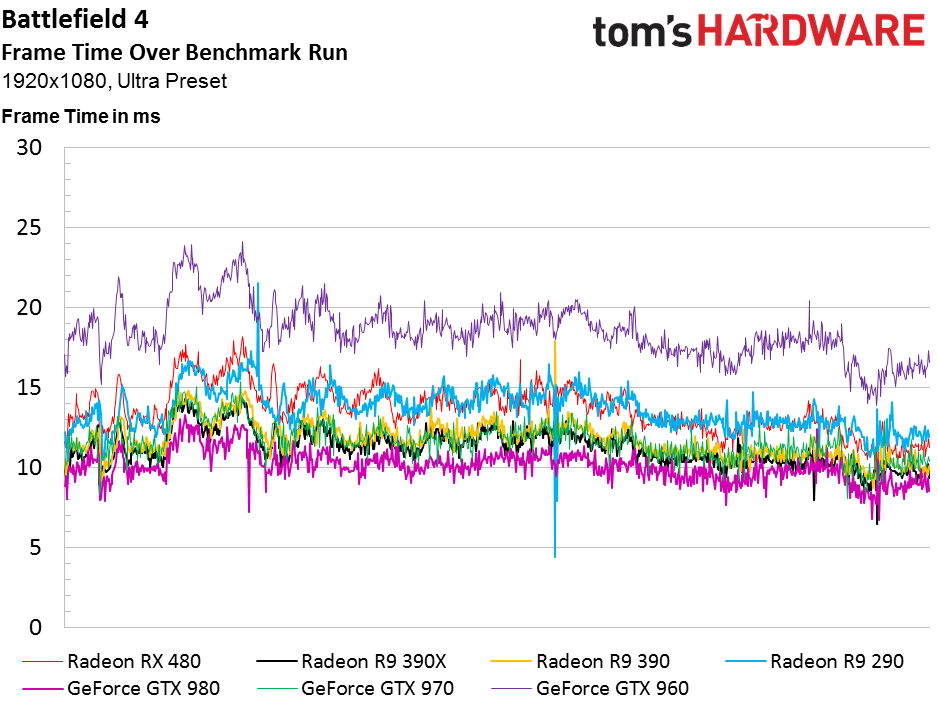
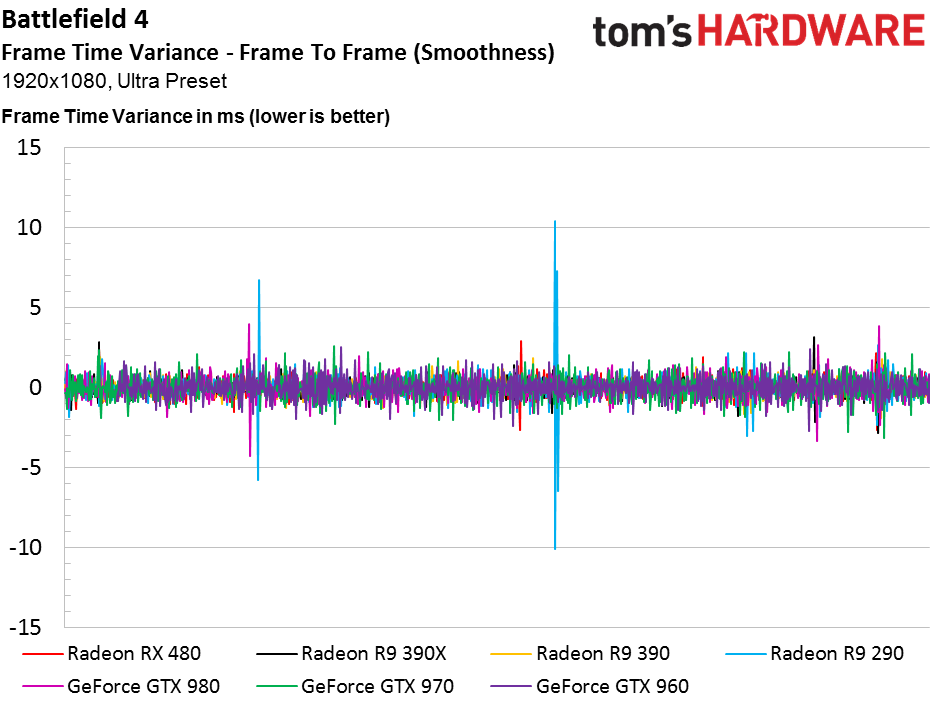
Experience could have prepared us for this outcome: Radeons don’t do as well in Battlefield. Here, though, the RX 480 essentially ties the R9 290, which itself falls well short of the GeForce GTX 970. At least you’re assured plenty-fast frame rates at 1920x1080 using Ultra details.
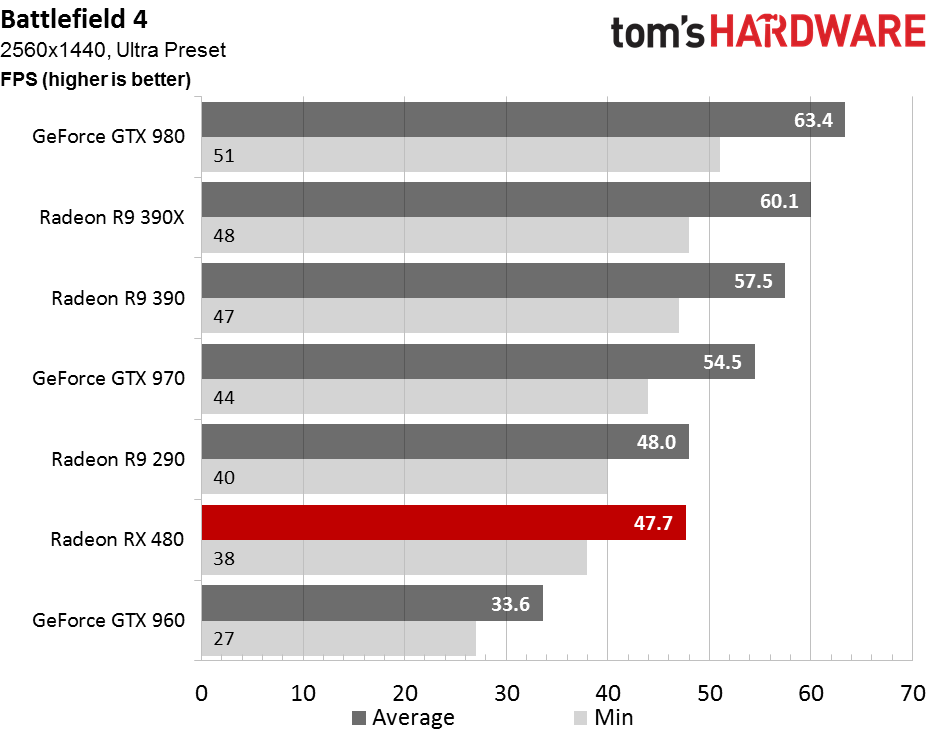
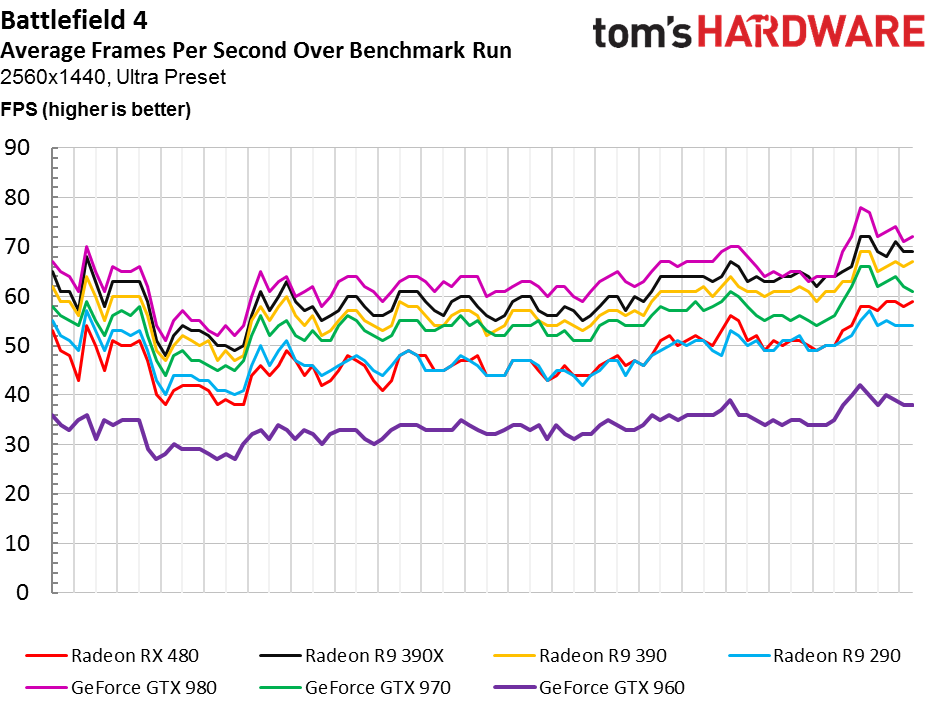
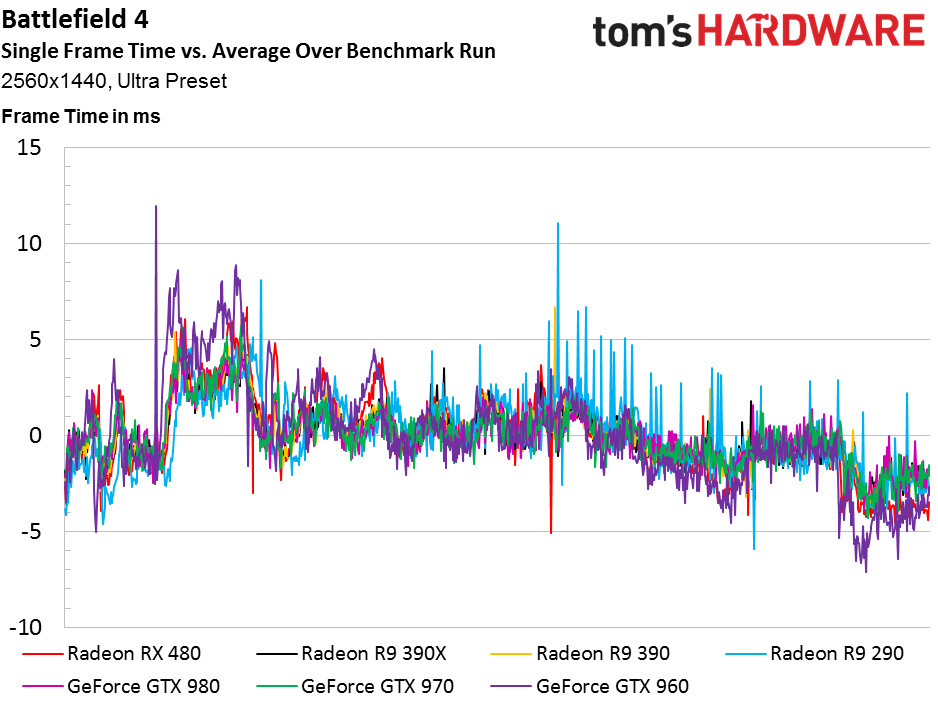
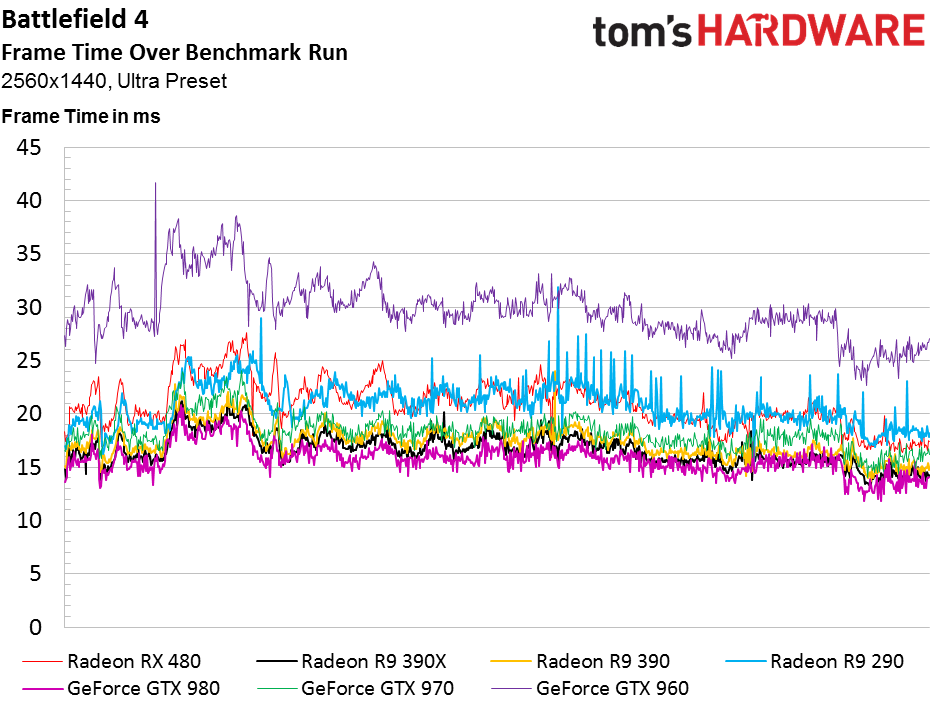
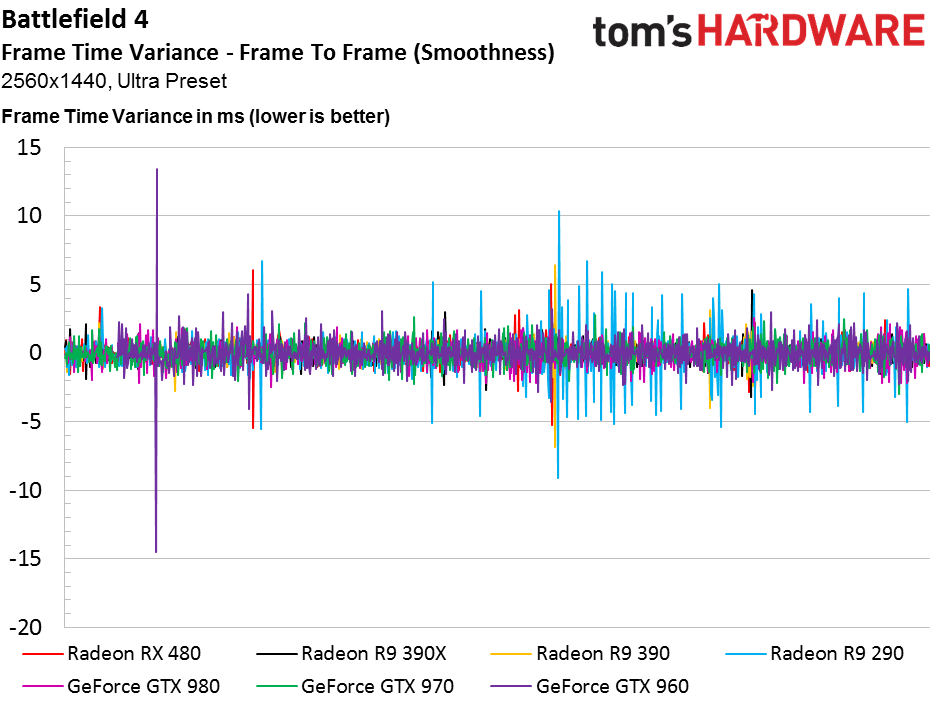
Even QHD is playable at maxed out graphics quality, though we still see the 480 tied with AMD’s almost three-year-old Radeon R9 290. Consider that the Hawaii-based board launched at $400 though, while RX 480 starts at $200. Of course, 8GB R9 390s sell for less than $300 these days, so let’s hope BF4 is a worst-case for the RX 480 we’re testing.
Grand Theft Auto V
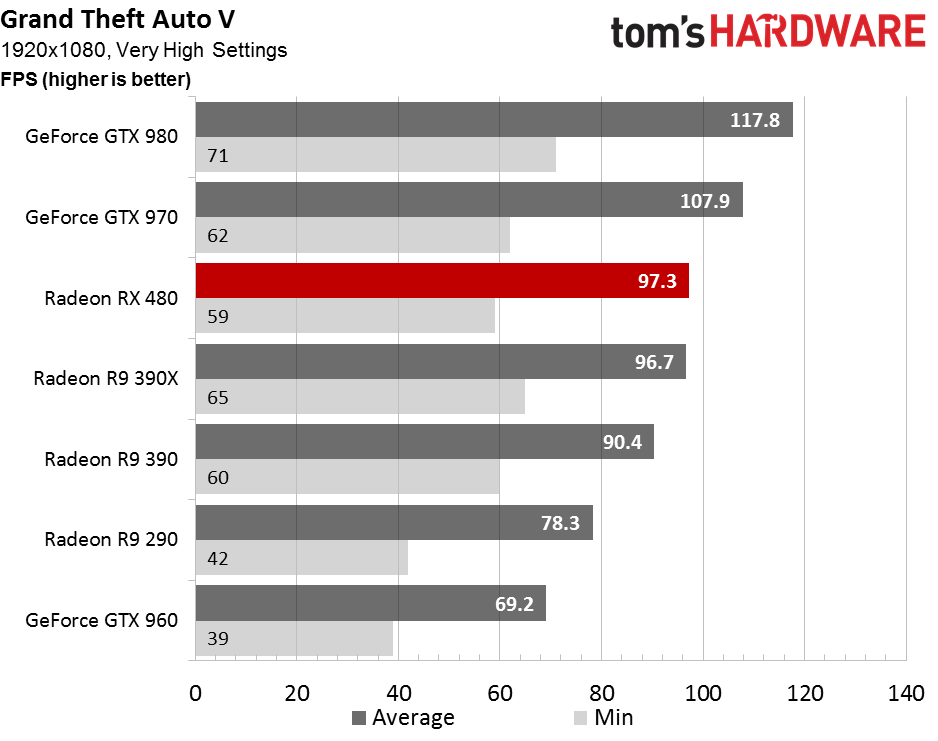

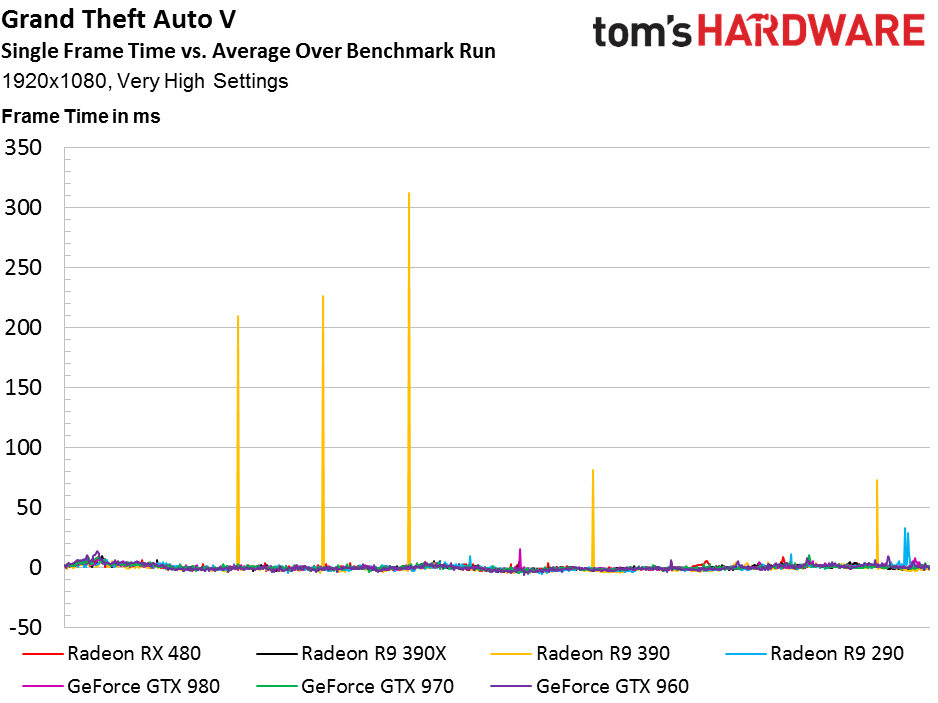
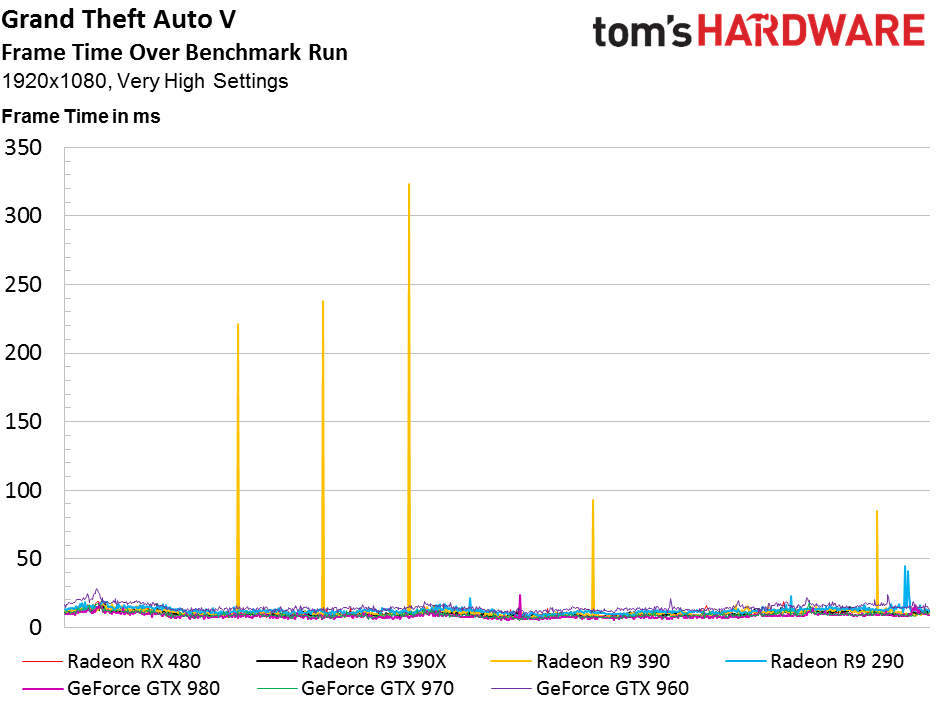
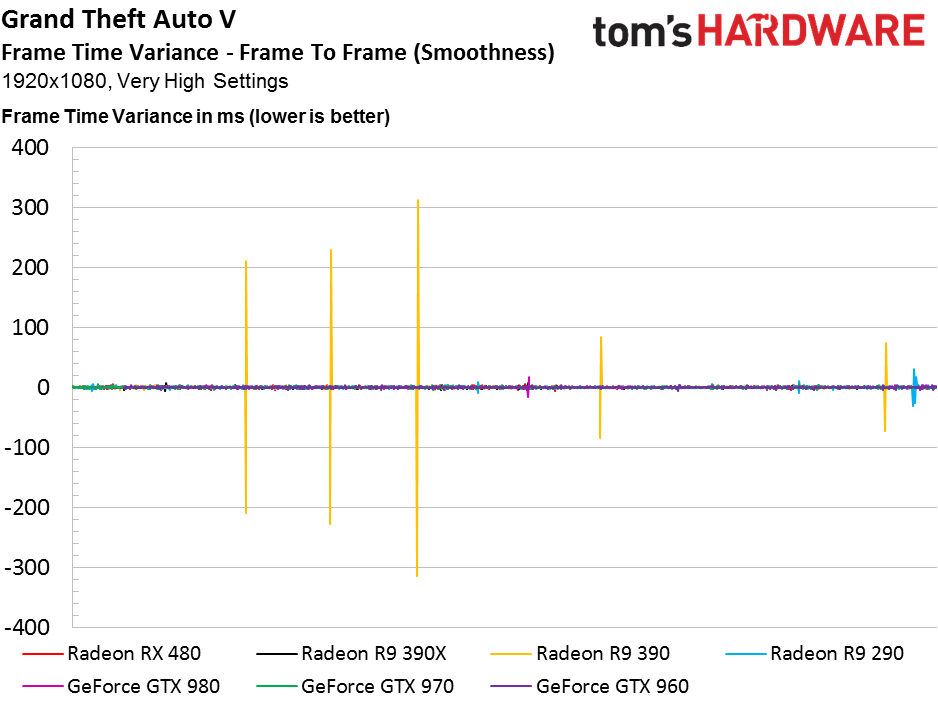
Average frame rates shoot up in Grand Theft Auto, where our test settings employ FXAA rather than MSAA. Could it be the 480’s leaner back-end? After all, the 390 and 390X can output 64 pixels per clock compared to the 480’s 32, and those older boards benefit from 512-bit buses topping out at 384 GB/s. Even with 8 Gb/s GDDR5, the RX 480’s 256-bit bus tops out at 256 GB/s. The larger cache and improved delta color compression only go so far.
One artifact that these charts don’t entirely capture is an intermittent stutter suffered by AMD’s cards. Big frame time spikes on the Radeon R9 390 are our only data-based indicator of this, but every card exhibits the behavior.
Get Tom's Hardware's best news and in-depth reviews, straight to your inbox.
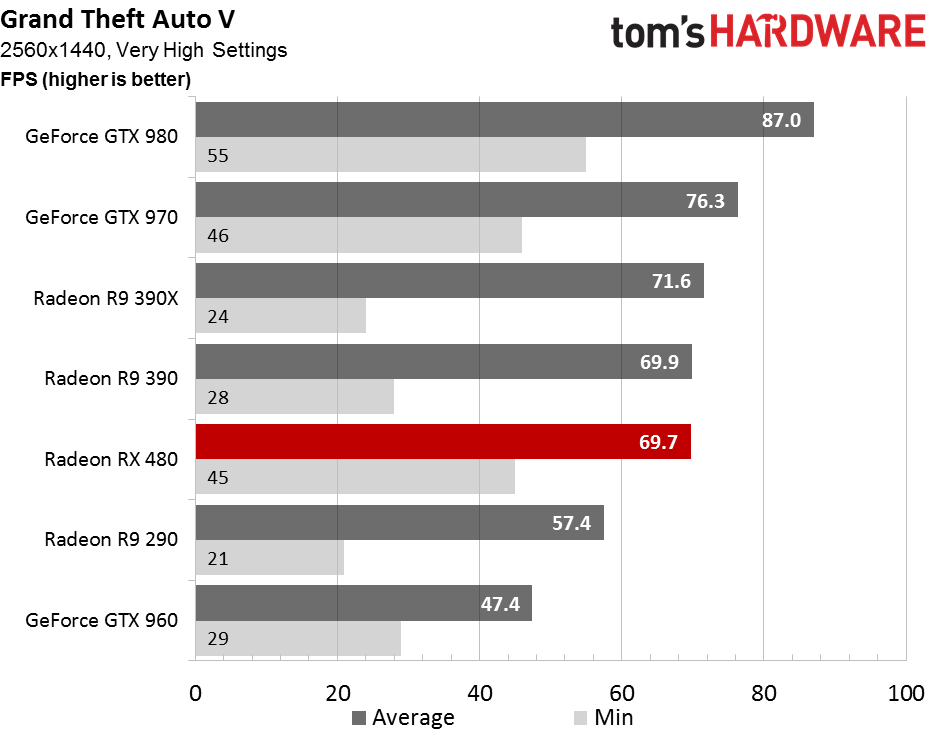
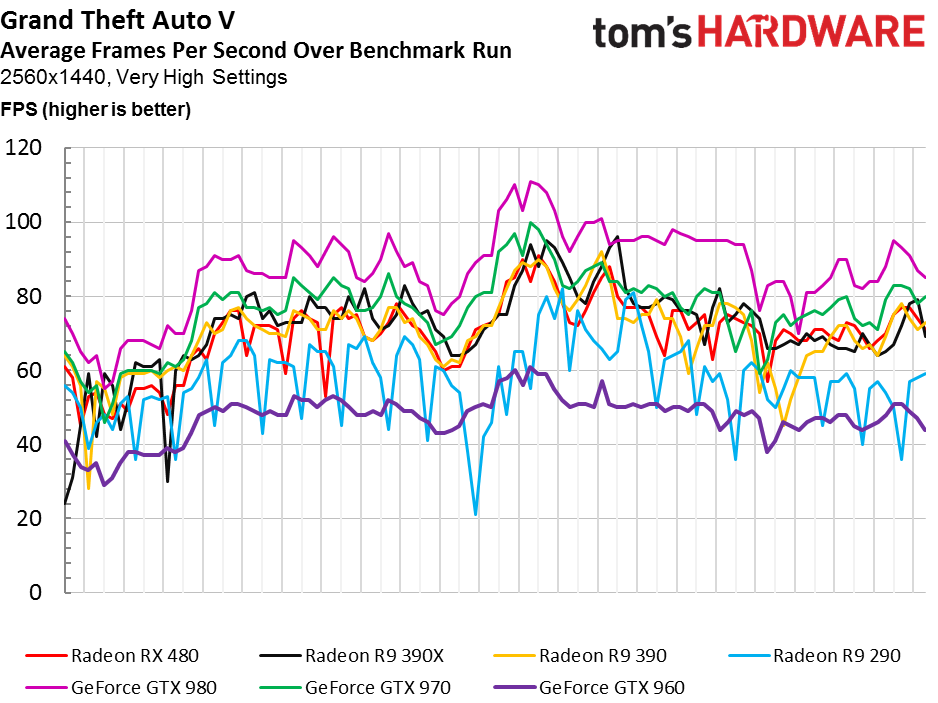
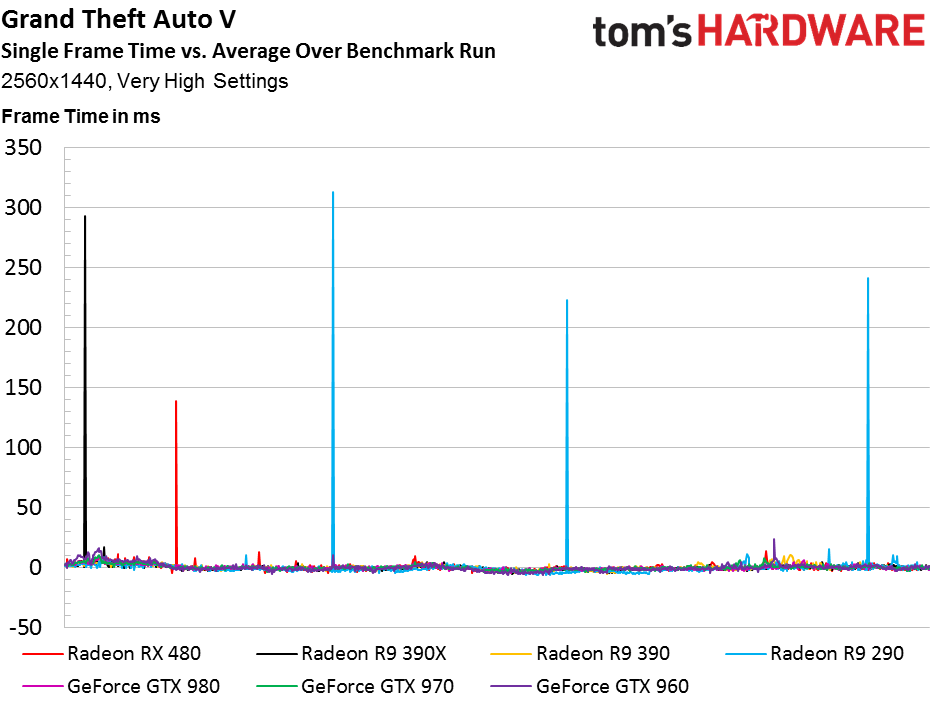
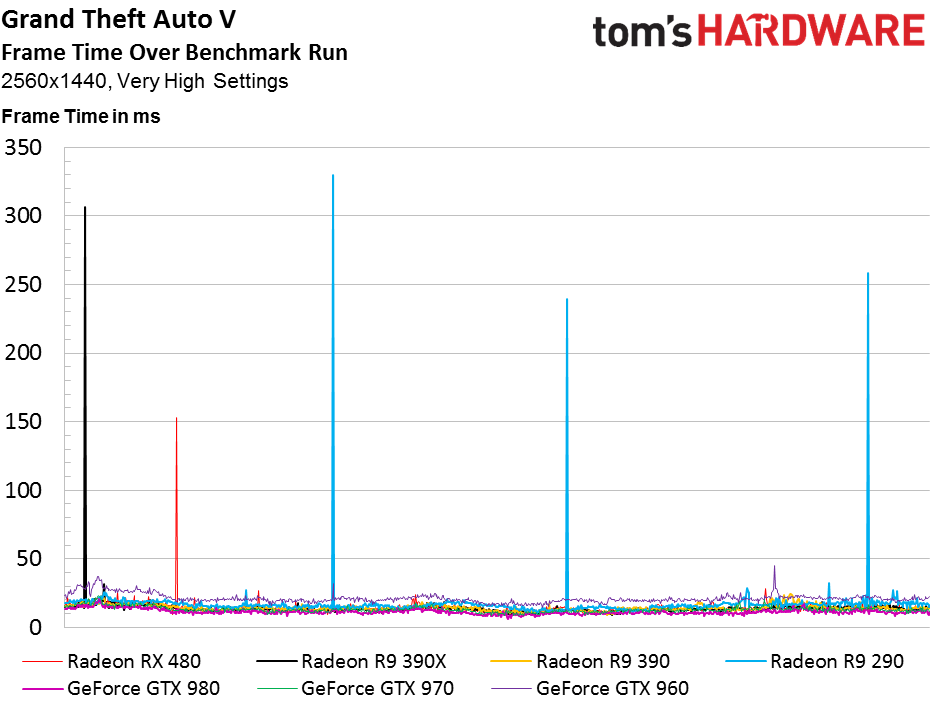
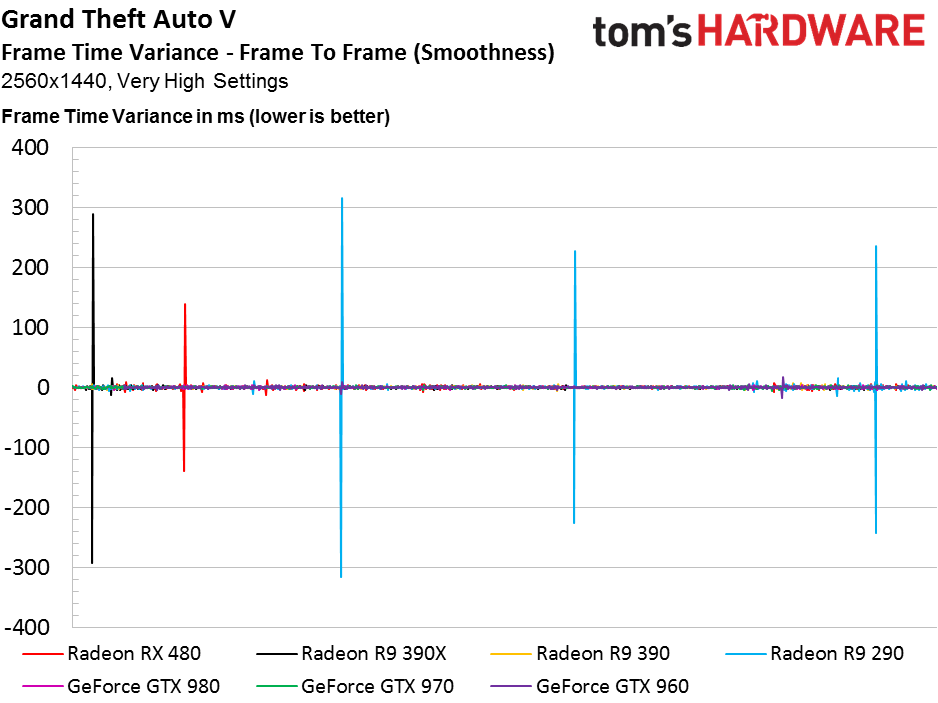
This time the spikes are observable on the 480, 390X and 290, though they appear to be outliers when, in reality, they’re far more persistent.
That issue aside, a higher resolution drives the Radeon RX 480 down under AMD’s R9 390X and 390. We might be inclined to crown the 480 our top pick for playable QHD in next month’s Best Graphics Cards column, but it’s clear that’s where AMD’s biggest implementation of Polaris starts running out of steam.
MORE: Best Cases
MORE: Best CPU Cooling
Current page: Ashes of the Singularity, Battlefield & GTA V Results
Prev Page How We Tested Radeon RX 480 Next Page Hitman, Metro: Last Light Redux & Project CARS-
chaosmassive this card will be my replacement of HD 7770 card for sure !Reply
thanks for the reviews, though power consumption from PCI slot is real concern here
-
asukafan2001 Seems like a decent card for what it is and what its target market is. Based off where the 1070 and 1080 fall in though i cant help but feel the 1060 which is targeted for the fall might make things uncomfortable for th 480. Nice to see amd working on power efficency though. That has always been a weakspot for them.Reply -
JeanLuc I can't help but think you need to revist this. The AOTS benchmark don't look right, the 480 is behind the 390, 390X and GTX980 in DX12.........I know this card is mid range and all that but it is 14nm with a revised chip design, surely it should be ahead of the last generation mid range cards even if it's by just a small amount.Reply
Edit: I stand corrected. Just looked at Anandtech and there results confirm what Toms is reporting. -
Oranthal Wow all the hype and it didn't deliver on any of it. Yes its an improvement but a marginal one and the supply is non existent. So its a paper launch as well. I was hoping this would be the solution to my 1440p 144hz freesync setup. Really disappointed, then again nothing lives up to online hype now. Nvidia's offerings hit the performance numbers we wanted but are insanely expensive. So I will keep waiting to see if drivers and oc's helps this card out or hope the 490 delivers.Reply
Edit: The cards are 100% available on newegg, I guess it took them until 9:30 to have them show up. I am still completely let down and hoping the partner cards and new drivers deliver on some performance gains. I guess its my fault for believing the hype that AMD could produce the same jump in the low to mid tier that Nvidia did for the high end. -
envy14tpe All that hype and finally the release....ahhh. We now have competition in the market place. The 960 and 970 have a good contender. Let's just hope price stays low as AMD doesn't play Nvidia's limited supply game.Reply
In Taiwan (where I am). There is one listing today selling the Gigabyte for $315usd. Prices need to get worked out. At that price I can get a 970.
-
rmpumper So basically AMD caught up to nvidia's now obsolete 9xx series? So much for the hype, though not unusual for AMD.Reply
